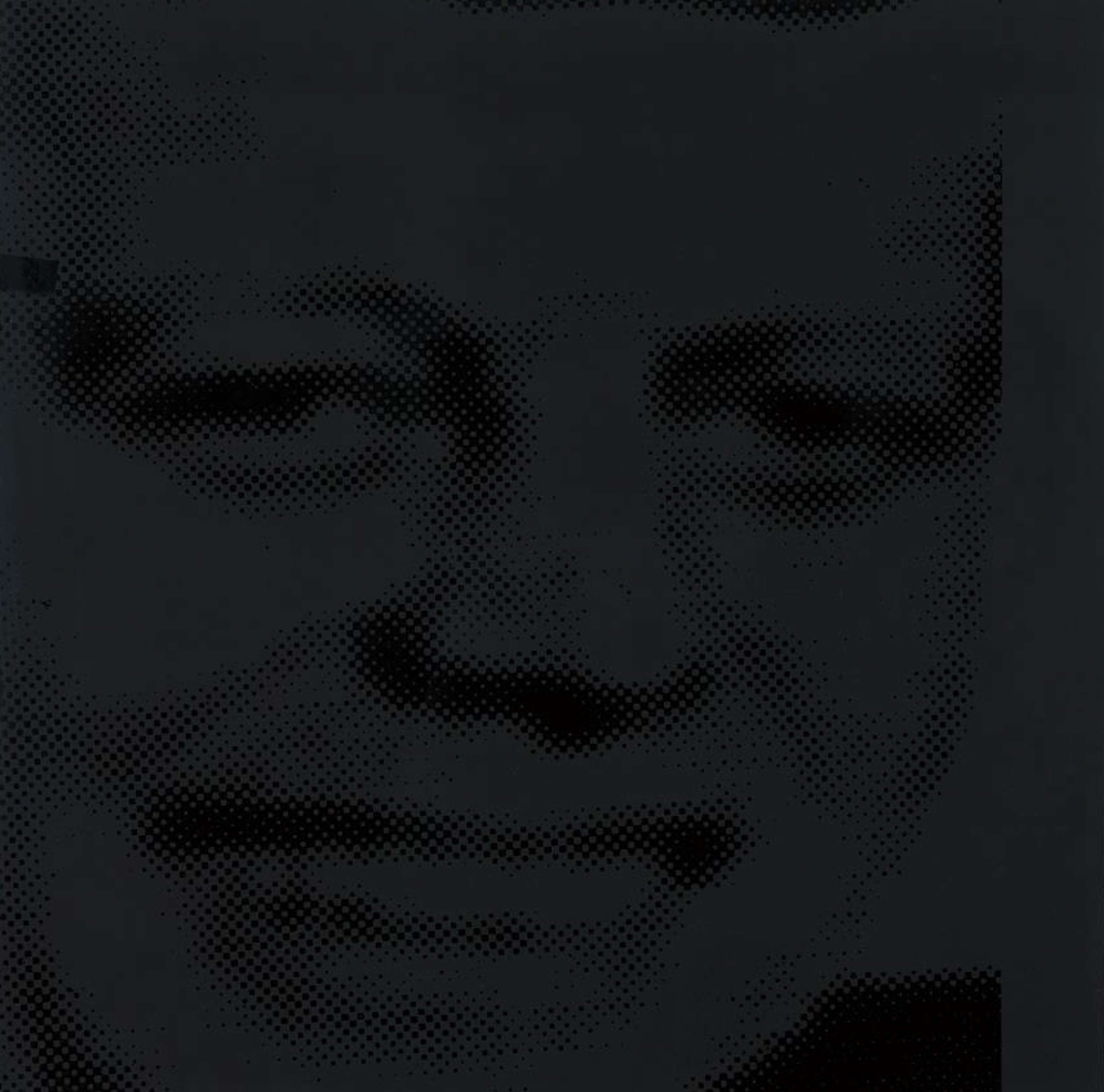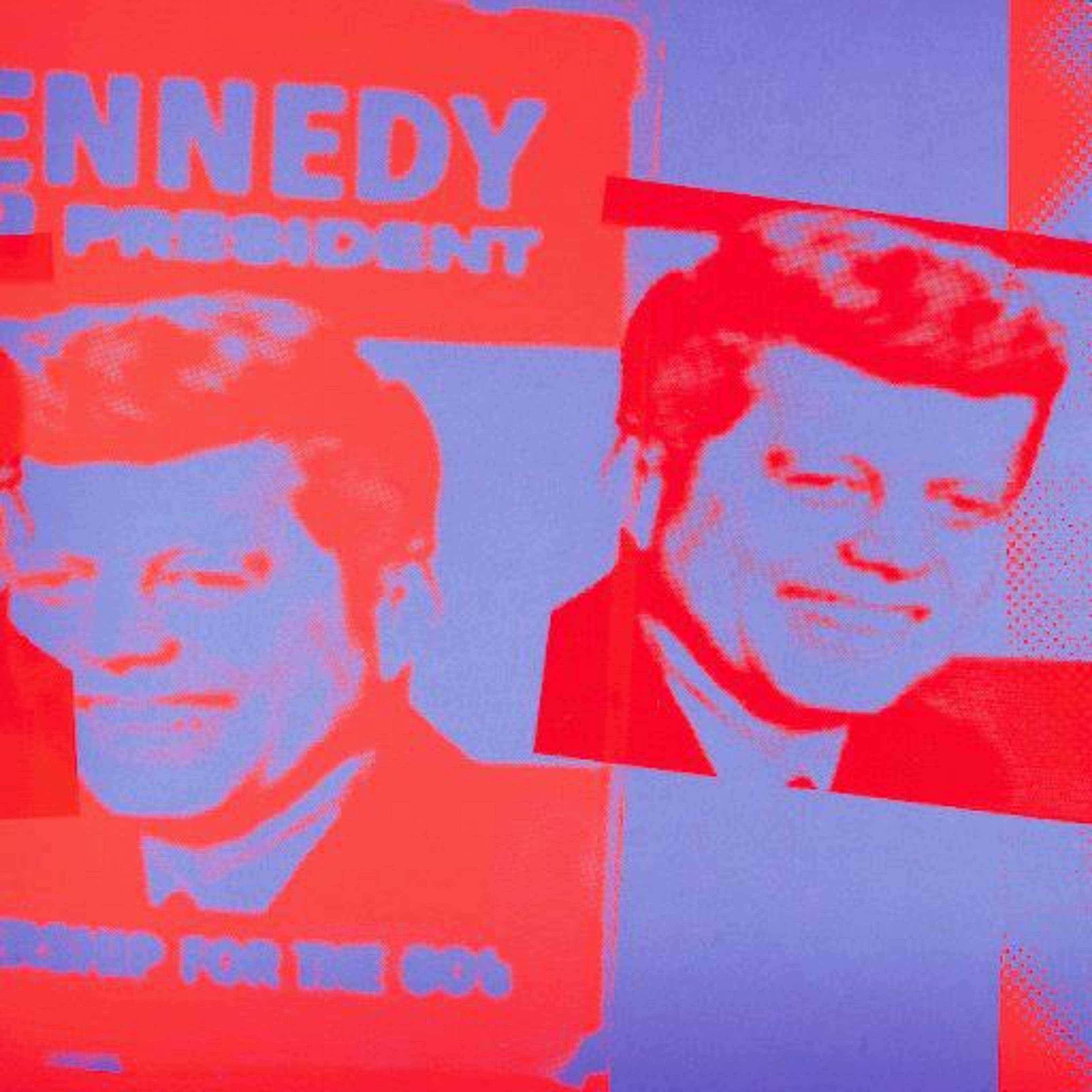 Flash November 22 (F. & S. II.35) Andy Warhol, 1968
Flash November 22 (F. & S. II.35) Andy Warhol, 1968
Interested in buying or selling
Andy Warhol?

Andy Warhol
487 works
Andy Warhol’s print series Flash-November 22, 1963 series (1968) is an iconic series about President John F. Kennedy’s presidential campaign.
This series is based on newspaper clippings of the assassination of President John F Kennedy.
 Flash November 22 © Andy Warhol, 1968
Flash November 22 © Andy Warhol, 1968The prints all come in edition sizes of 200 and each print takes an image that Warhol obtained from news clippings and photographs that circulated in the mass media in response to the assassination of the American president, John F. Kennedy in 1963.
The series was originally presented in book form.
 Flash November 22 (F. & S. II.41) © Andy Warhol, 1968
Flash November 22 (F. & S. II.41) © Andy Warhol, 1968The prints were featured in a book along with text from the newspapers that were circulated in the wake of the tragic event.
The title of this series refers to the phrase ‘news-flash’.
 Flash November 22 (F. & S. II.37) © Andy Warhol, 1968
Flash November 22 (F. & S. II.37) © Andy Warhol, 1968The title of the collection refers to the phrase ‘news-flash’ which denotes a highly important piece of breaking news. Kennedy himself features in many of the prints with one print, Flash November 22 (F. & S. II.34), using a photograph of his wife, First Lady Jackie Kennedy.
The Flash-November 22 series was a way for Warhol to explore the relationship between society, the media and tragedy.
 Flash November 22 (F. & S. II.39) © Andy Warhol, 1968
Flash November 22 (F. & S. II.39) © Andy Warhol, 1968Warhol’s use of news clippings and newspaper photographs is a way for the artist to capture and memorialise the media’s reaction to the assassination.
Flash-November 22 depicts the artist’s final response to this historic event.
 Flash November 22 (F. & S. II.35) © Andy Warhol, 1968
Flash November 22 (F. & S. II.35) © Andy Warhol, 1968Warhol explored the assassination of Kennedy in other artworks, and Flash-November 22 marks the artist’s final response to this shocking event. Another notable collection produced by Warhol which focus on the assassination is his series of screen prints of Jackie Kennedy which the artist produced earlier in 1965.
Warhol uses his famous screen printing technique in this series.
 Flash November 22 (F. & S. II.32) © Andy Warhol, 1968
Flash November 22 (F. & S. II.32) © Andy Warhol, 1968Throughout this collection, Warhol uses his screen printing technique to deliberately flatten the images of Kennedy. Warhol then adds bright and bold colours to the photographs, a signature element of the artist’s Pop Art style.
Screen printing as a technique reflects the subject matter of this series.
 Flash November 22 (F. & S. II.34) © Andy Warhol, 1968
Flash November 22 (F. & S. II.34) © Andy Warhol, 1968The screen printing technique is a means for Warhol to further explore the role of the mass media in responding to tragic events as the technique is a way of mass producing and circulating images which resonates strongly with the way newspapers and magazines are produced and circulate breaking news.
The series attracted some controversy.
 Flash November 22 (F. & S. II.42) © Andy Warhol, 1968
Flash November 22 (F. & S. II.42) © Andy Warhol, 1968The collection was controversial due to the way in which Warhol manipulated images of Kennedy following his sudden death. The use of bright colours and a graphic style can be seen as insensitive.
This series explores the theme of desensitisation and the public.
 Flash November 22 (F. & S. II.36) © Andy Warhol, 1968
Flash November 22 (F. & S. II.36) © Andy Warhol, 1968Warhol was interested in exploring how the public has become desensitised to images of death and tragedy due to their oversaturation in the news and the proliferation of mass-news images.
Warhol in this series, like in many of his artworks, is interested in blurring the lines between high art and popular culture.
 Electric Chair (F. & S. II.78) © Andy Warhol, 1971
Electric Chair (F. & S. II.78) © Andy Warhol, 1971By taking images from campaign posters, newspapers and advertisements, Warhol appropriates popular images and elevates them into the realm of high art. In doing so, the artist questions the value of art and what makes these images different from those widely disseminated in the media.